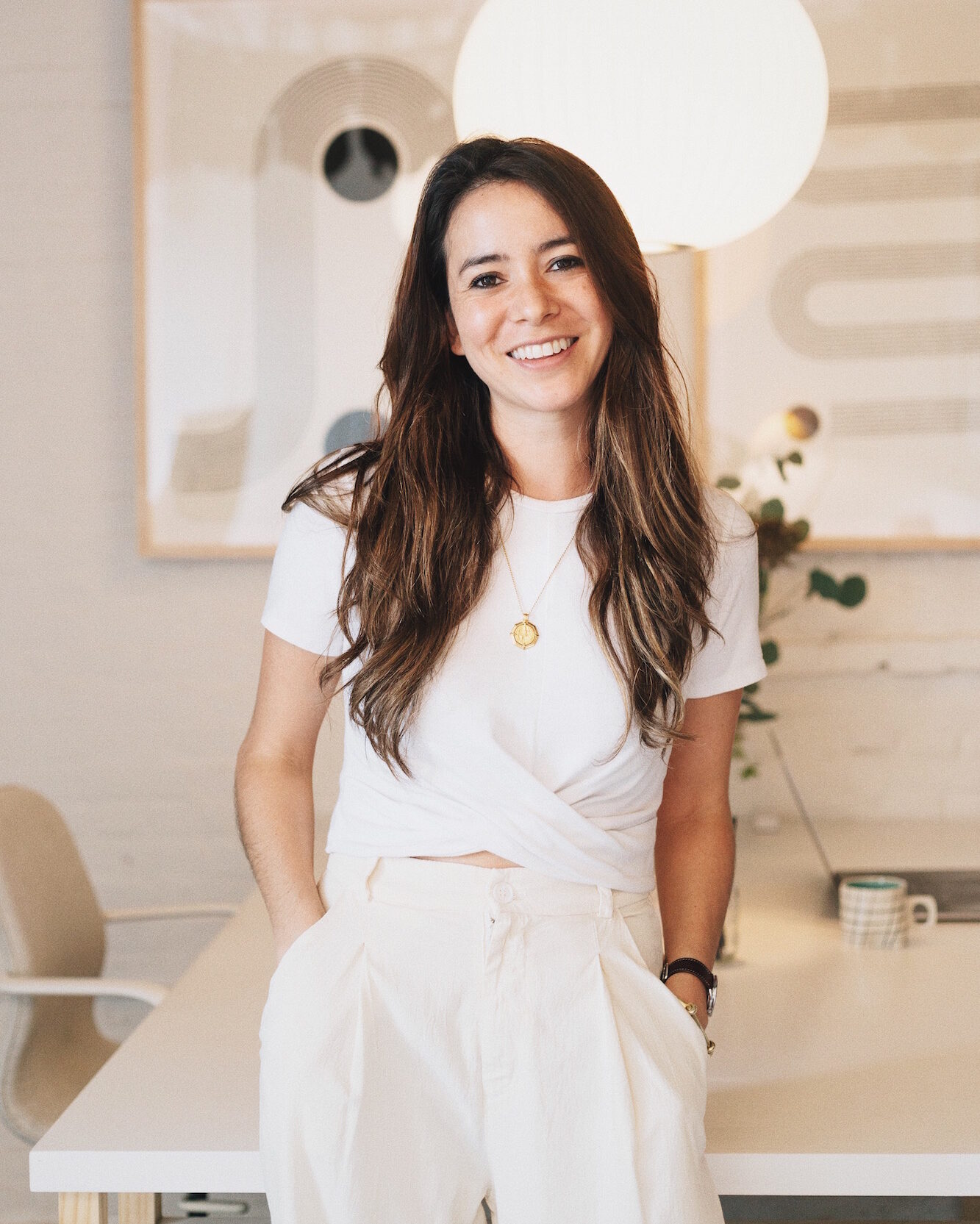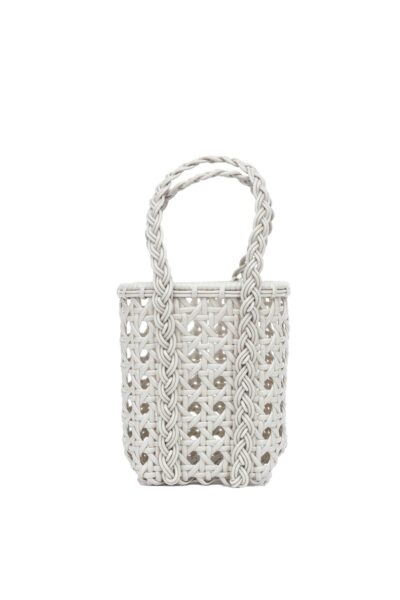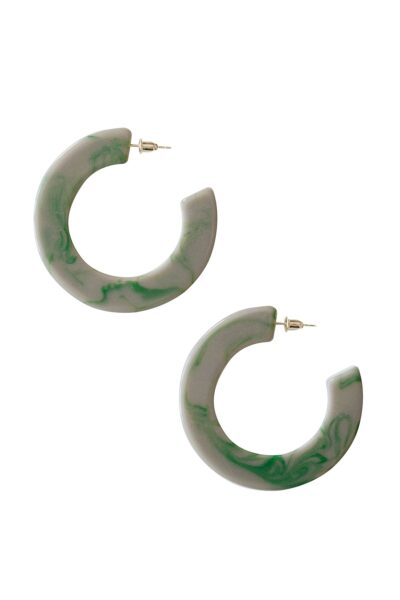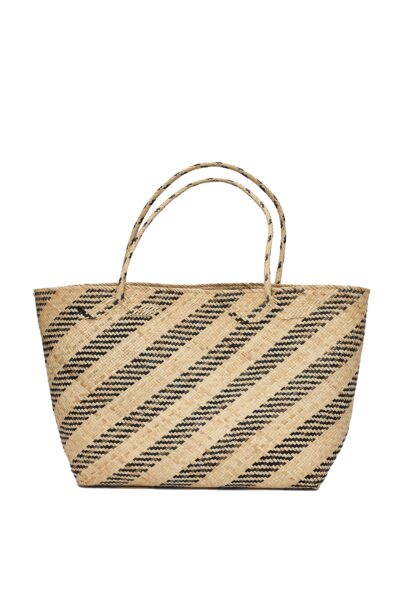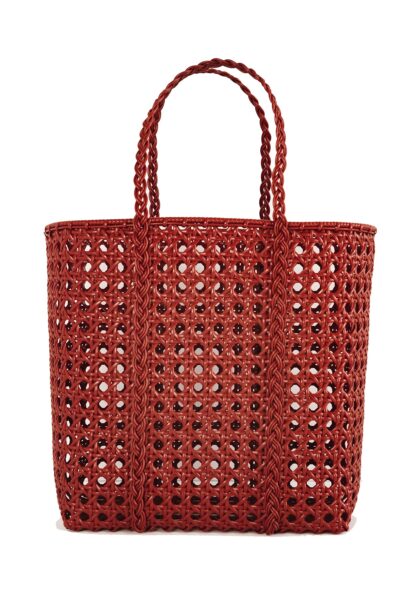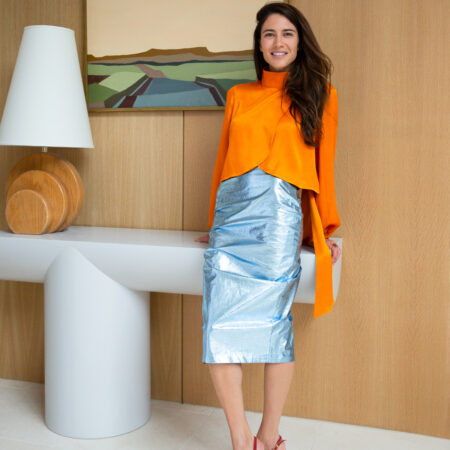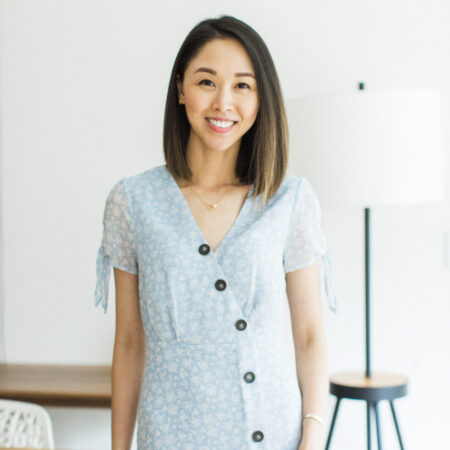“Everything has stopped,” admits Yi-Mei Truxes, founder of the coveted Brooklyn-based straw bag brand Bembien, on the effects of COVID-19 on her business. “It’s going to be really hard…it’s a time to relook at things we were doing and question them.”
In 2016, long before the consequences of a world-wide pandemic was on anyone’s mind, Truxes was working as a marketing director for Vogue, immersed in it-girls, consumer behavior, and fashion trends. “I was obsessed with the world of fashion and obsessed with the customers and why they do things,” she recalls. In a time before natural, raw materials had become as popular as they are today, Truxes describes the movie-like moment when she spotted a young woman in Tribeca—“the chicest girl I’d ever seen”—wearing what became the inspiration for Bembien. “She had this very undone, less-is-more, all-natural, linen white dress. And this totally disheveled straw bag that just struck me.”
Truxes did a deep-dive search on where to find the woman’s bag, ordering every straw version she could find. “Everything came in fake, straw-feeling materials, and felt very machine-made,” she recalls. “It occurred to me that the beauty in that woman’s bag wasn’t something that could be produced in [a large factory] or available at a major retailer. So I started looking into artisan communities of weavers.” She discovered a supply of artisans in Bali who were missing the demand of a Western consumer, and found her calling in becoming the connection between the two. “I am a born marketer,” she says. “If there’s anyone primed to bring these goods to a larger consumer base, give work to the artisans, and connect them to the fashion world, it’s me.”
Truxes started Bembien as a side hustle, with zero intention of actually launching a fashion brand. She claims she is not a risk-taker, and the thought of quitting her full-time job seemed, well, risky. Trying to balance both, however, quickly became an opportunity cost. “It happened really fast and I just wasn’t prepared for that.” Truxes was so busy packing orders and getting her product out to customers that she was missing press opportunities and wholesale inquiries. It became clear she didn’t have the bandwidth to do it all. “My Achilles heel as a founder is I’m not a risk-taker, and I worked myself into the ground until it was glaringly obvious that I had to leave my full-time job,” she recalls.
Shop Bembien on The Helm
To get Bembien off the ground, Yi-Mei ordered bags in five styles using $20,000 from her savings. Ordering from artisan weavers, instead of a big factory, allowed her to keep her inventory small. Three months after launch, the company was profitable. “That was when we went live. All the revenue that came from sales went right back into inventory. I had sold out of everything, reinvested, sold out, reinvested.” To store the inventory and ship her orders, Truxes rented a small office in a shared workspace that had a converted elevator shaft for $800 a month. For branding, Truxes (with help from her husband) hand-stamped the bags’ labels and packaging for the beginning of the business, and all branding design was done in-house. Rent, basic shipping supplies, and inventory were her only expenses.
For marketing, Yi-Mei took photos with her iPhone and shared user-generated photos from girls who had bought the bags and posted pictures of them on Instagram. She prefers being scrappy over seeking funding. “I get asked by a lot of people thinking about starting a business, ‘How much money do you think I need to be able to launch properly?’ And while there are many right ways to go about it, for me it was like, ‘Yes, you can raise $1 million, you can get the best branding agency, the best PR, and the packaging, but until you actually hit ‘live’ on your site, you don’t have that strong a proof of concept. So why not start small in a way that you can sustain and grow?” She stresses the importance of learning from the first few sales, because it is based directly off of her customer. “Understand who your customer is,” she says, “and then adapt and grow in that direction.”
"Understand who your customer is and then adapt and grow in that direction."
A few months ago, Truxes hired her first full-time employee and moved to a bigger office space. Bembien’s bags now sell at stores like Club Monaco and J. Crew, and are also rentable on Rent the Runway. “Club Monaco was our first significant retailer,” says Truxes. “A buyer purchased one of our bags, loved it, and reached out to see if we would be interested in wholesale. We were really lucky to have such a great first partner.” Around the same time, she was put in touch with J.Crew through a well-connected friend. It’s these moments of serendipity that have allowed Truxes to keep her business lean: marketing is not a significant expense, with 60 percent percent of her budget going towards inventory, 20 percent for personnel, and the rest towards office, marketing, and other miscellaneous costs. The money she pays herself only equals her exact living expenses. “Everything else gets funneled back and all the frivolous things go away,” she says. “But it doesn’t feel like you’re not getting a salary because you only care about your business.” She no longer uses her iPhone for photos but the photoshoots are still very simple. “A friend of mine, Lucy Laucht, and I will go on these scrappy trips where she’s the photographer, I’m the stylist and makeup artist, and we’ll find a model from the area who’s young and emerging.”
Then the coronavirus hit, and everything changed. While Truxes had originally planned to start paid advertising on Instagram and other channels this year—which, though expensive, can increase revenue four-fold in a matter of months if done correctly—her plans have been put on hold. “For a small business like mine,” she says, “the [wholesale] orders going out for future seasons are either being put on hold or getting canceled by retailers. But we’ve already produced the goods with an order confirmation in hand. So that is extremely challenging.” Truxes’ overhead is low, but Bembien’s entire supply chain has halted, and for weeks, no shipments were coming in from her producers abroad. But she reminds herself that this is a universal problem. “Sometimes things are just out of your control and you need to embrace the pause.”
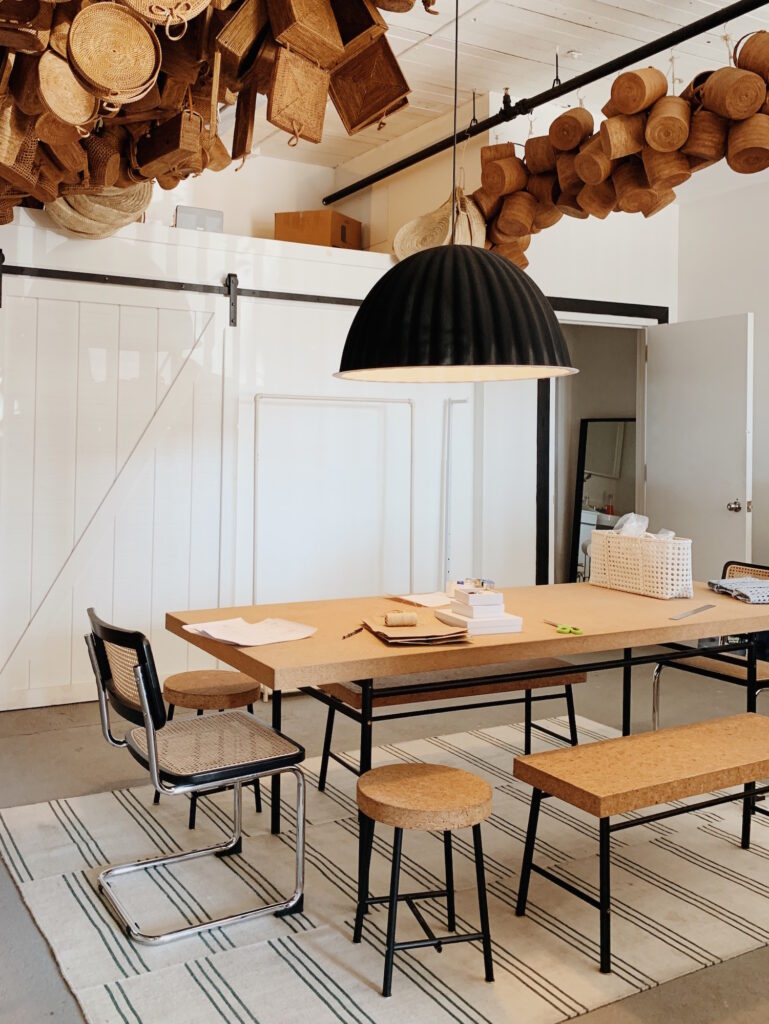
Now, as production is beginning to pick back up in Bali, and as stores are starting to re-open, things are looking up. “We’ve been fortunate to have had some wonderful partners who are willing to meet in the middle on accepting their spring inventory,” Truxes explains, adding that 60 percent of revenue will come from direct-to-consumer sales this year. And while the stresses of the current times can feel suffocating, Truxes finds comfort in at least one silver lining. “Consumers are not going to come out of this the same,” she argues. “They are going to hold the brands they support to higher ethical standards, and expect transparency and open communication with the brand owners.” For Bembien’s customers, that might mean buying items that are more necessary, useful, and long-lasting. “It’s back to the basics. The tiny handbags with little functionality may be put on pause for now, and we’ll focus on styles that feel like a worthwhile, long-term, practical investment.”
Yi-Mei Truxes Answers 5 Financial Questions on Founding a Business
- What do you regret spending money on in the beginning?Everything was coming directly out of my pocket, so I was extra frugal about spending on all fronts. Our only expenses at that time were inventory, warehouse space, and what it took to successfully get the product out to customers. Of course, there were expense misfires in the early days as we learned our product and customer demand, such as ordering packaging that didn’t work out, but there is really nothing specific I regret from that time.
- What do you wish you spent more money on in the beginning?
Product imagery! I took all the product photos of our initial collection with my iPhone (which in hindsight is ridiculous), and some of those images ended up in places like the WSJ and Vogue.com. That is definitely something I should have spent money on in the early days. - Best piece of financial advice you received?
Learn the basics of financial modeling and understand your path to profitability. - Biggest financial mistake you made?
I am relatively uncomfortable with debt for an entrepreneur, so there have definitely been a handful of opportunities that I haven’t fully capitalized on as a result. In the early days, there were opportunities to wholesale with major partners and brands to collaborate with that we passed on due to low margins, and because we didn’t want to take the risk financially. - Most important cost in your business and why?
All costs involving our artisans (such as the premiums we pay on inventory and the donations we pay to Nest). They are the beating heart of this business, and it is important that we continue to support their communities as best we can.
